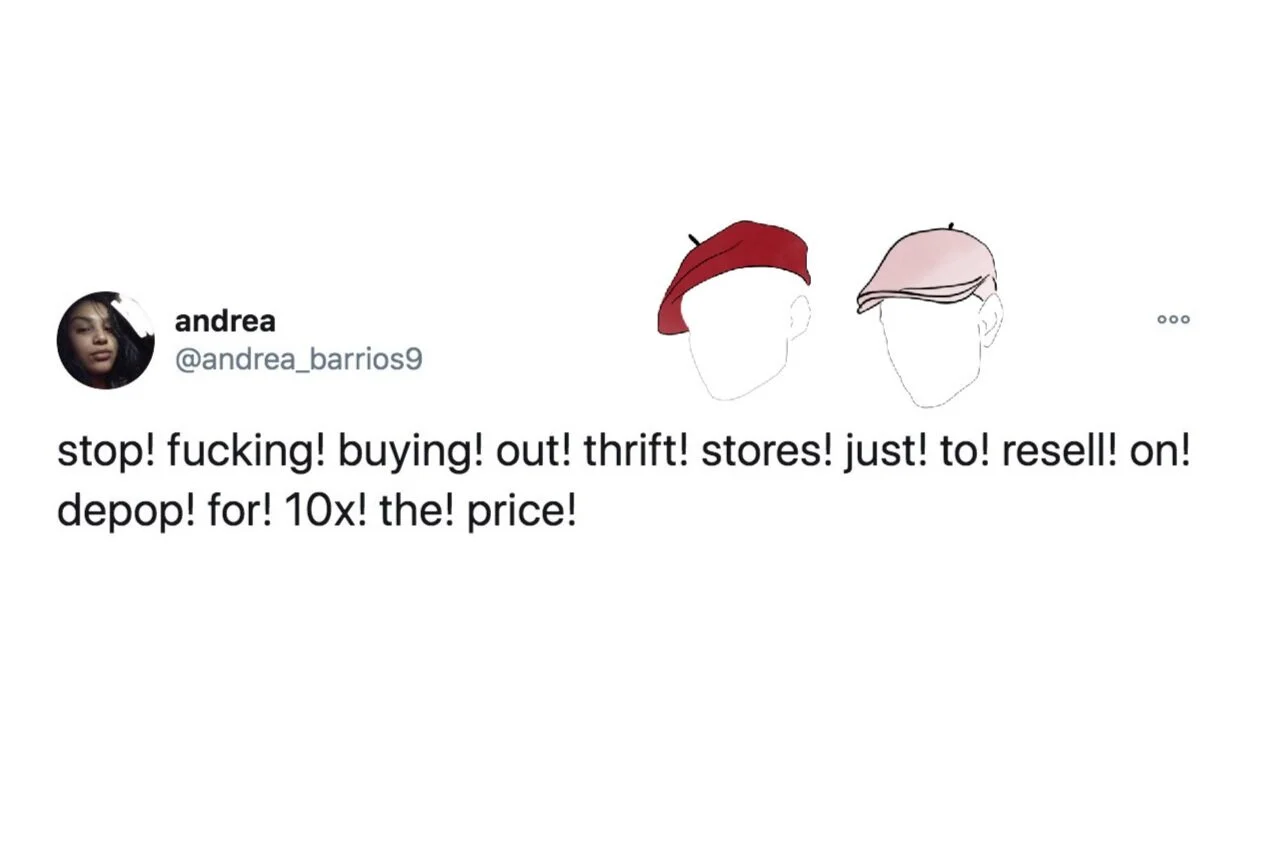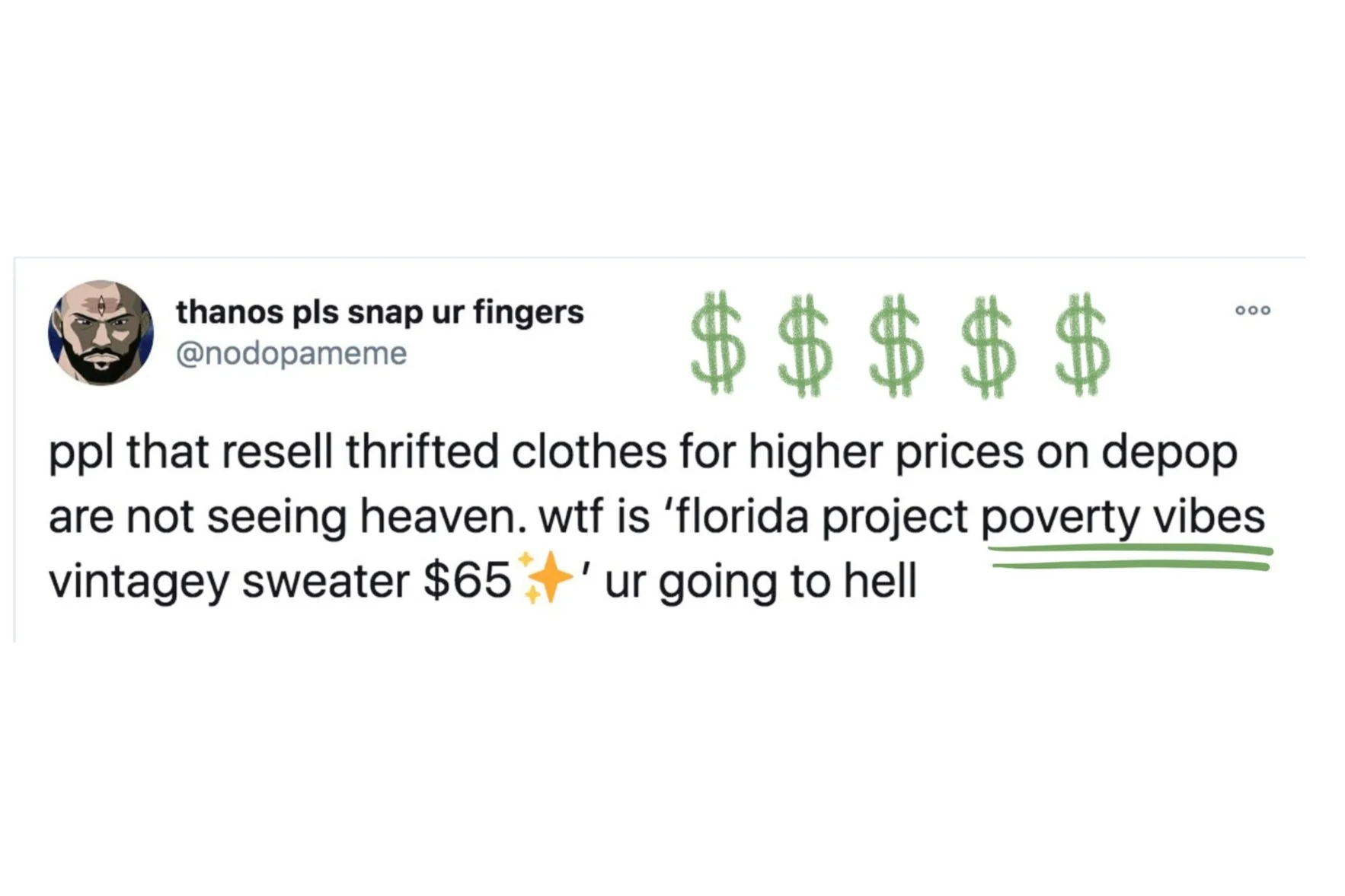Is the Art of Thrifting Lost?
After I realized very real, more important impacts of the pandemic, I began to realize something else: I wouldn’t be able to go to my local thrift stores. After the paranoia of the pandemic (slightly) died down, I migrated back to my local Goodwill. Hand sanitizer and mask in tow, I walked through the automatic doors to find a socially distanced setting. However, those few months in between taught me a lot about navigating online thrifting options, and the costs and benefits that come with them.
Sure, I missed the musty, comforting smell of used clothes as I stepped on linoleum floors, but there was a sense of ease when surfing online thrifting platforms. I dug Depop out of the hidden corners on my iPhone and began following accounts I liked. I found myself scrolling through the app in my free time, swiping through pictures and surfing the thousands of accounts on the app. After several hours of searching, I quickly felt I was wasting my time. Despite the amount of accounts I followed and hours I spent scrolling, I rarely found pieces I actually wanted to spend money on. The occasional peasant top or midi skirt I found felt like a rarity, and even when I bought something, it seemed overpriced. However, the selection on Depop is much more curated to fit current trends and my personal style. Plus, there’s something to be said about buying vintage pieces from the comfort of your own bed.
On the other hand, the fun in in-person thrifting lies in finding unique pieces that fit your personal style, or pieces you can transform to fit your personal style. As you shift between the metal racks and stumble upon something you love, you may discover some cheap items that can fit your wardrobe. It feels like a treasure hunt. Pieces in local thrift stores often aren’t curated, which makes finding something you like an even more special experience. Knowing you put in physical work to find something and likely, nobody will have something similar, is a rare feeling when shopping. Furthermore, items on Depop and Poshmark are more pricey so the “treasure-hunt” feeling isn’t as strong and it often feels like you’re just shopping on a regular online-store.
Controversy surrounding apps like Depop and Poshmark stem from the idea of reselling thrifted items for a much higher price. Thrift stores are often a safe haven for lower-income families to shop. Low-income families might rely on thrift stores to get their children clothes for school or special events. On the other hand, higher-income shoppers might be going to thrift stores to find “unique” pieces at a cheap price, even though they can afford higher-priced items. The prices on Depop seem unnecessarily high. Have resellers democratized these platforms? While they may be more unique pieces, is it worth the price? Why does that plain Gap tank top (with two slits cut on the sides) sell for 45 dollars? Are you supporting a platform that takes away clothes from those who need it most? These are questions that I had never thought of until I turned to Depop for most of my shopping needs. The pandemic brought to light how people with privilege might take advantage of resources other people need more, especially at a time of struggle for so many people in our nation. While it’s important to be conscious of these potential issues, it is also okay to want to shop second-hand. If platforms like Depop are the way you can do that, go ahead. There are positive environmental and sustainable impacts of buying clothes second-hand. There doesn’t need to be excess waste or clothing production that supports the fast-fashion industry.
I’ll be the first person to call myself out. Especially in high school, I found myself and my friends migrating towards the thrift store instead of our local malls as soon as it became “trendy” to do so. However, one alternative I have recently discovered is going to vintage stores instead of my local thrift store. This way, I am paying the person who actually did the labor or curating the pieces, and at a price-point that is more suitable to me and doesn’t rob others of resources.
It truly depends on what you, as a consumer, are looking for in your shopping experience. If you want to find trendier items and are willing to spend more, platforms like Depop and Poshmark are probably for you. But I think it’s important for us to be aware of our impact on the thrifting industry as we shop. Although modern styles have shifted towards vintage pieces and unique finds that can often only be discovered at thrift stores, the negative impact this consumerism has is something to be aware of. Don’t support resellers who are inflating prices, and be conscious of what you buy. If you are someone with economic privilege, supporting a vintage store instead of from a thrift store outside of your community could be a more conscious way of reducing your environmental and social impact. How you spend your money makes a statement about your values. Happy (conscious) thrifting!
Here are some inexpensive options for online thrifting!:
BlakSands
Shop Moana Vintage
Echo Vintage
Vinted
NXC Vintage Shop
OchreSol
ThredUp
Nello Vintage
Hi noon
Shop the Stream
Words by Alisha Mirapuri
Designs by Darcy Burnham





